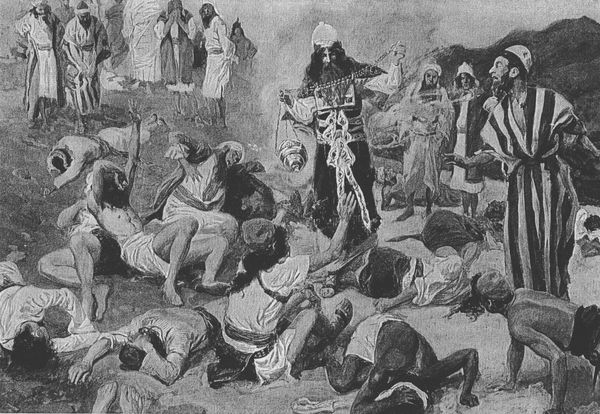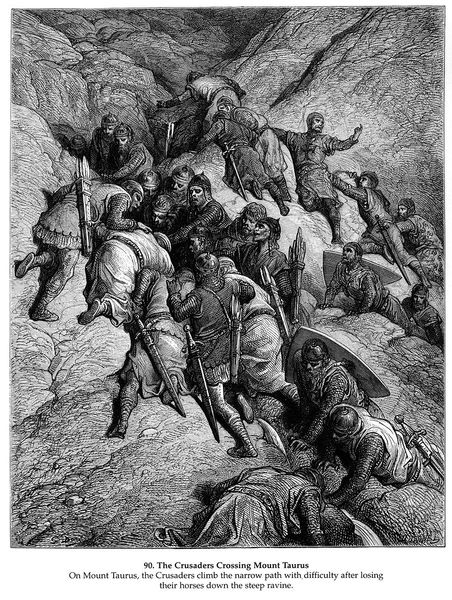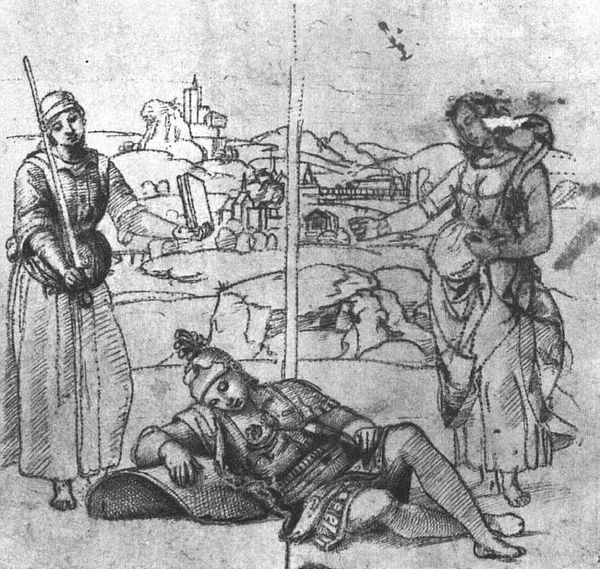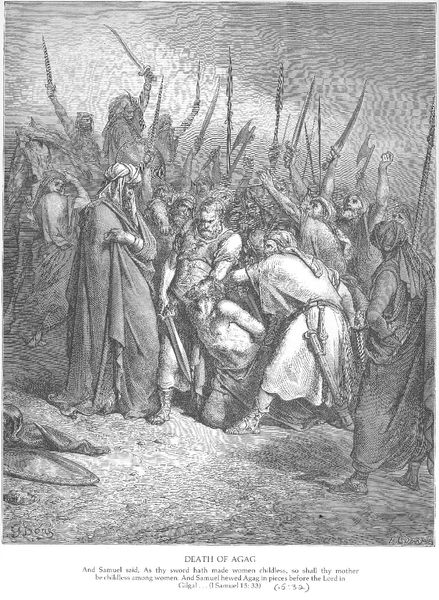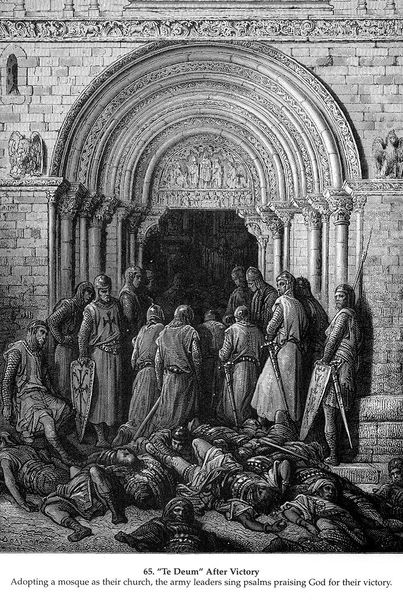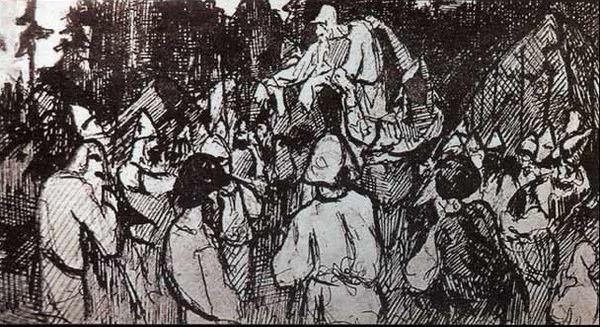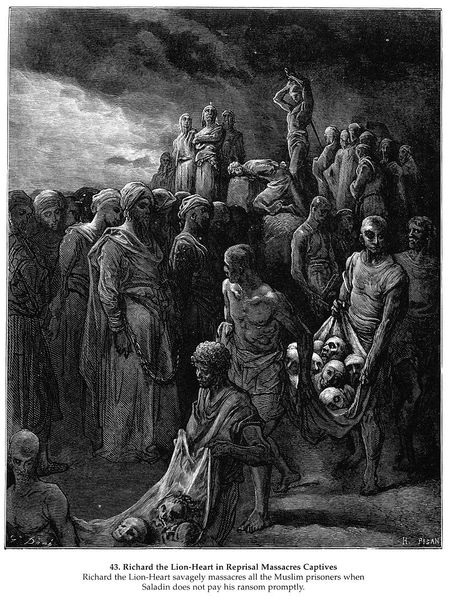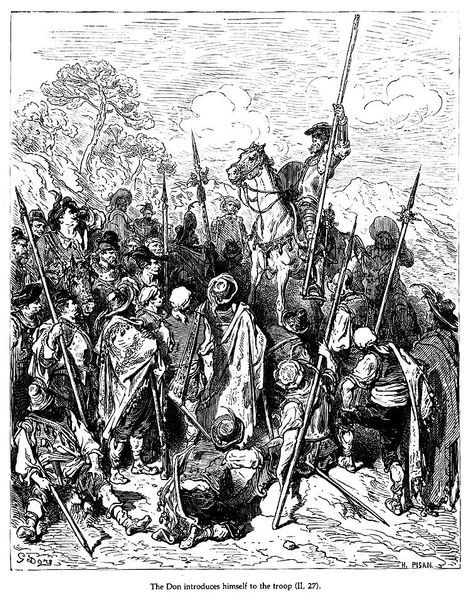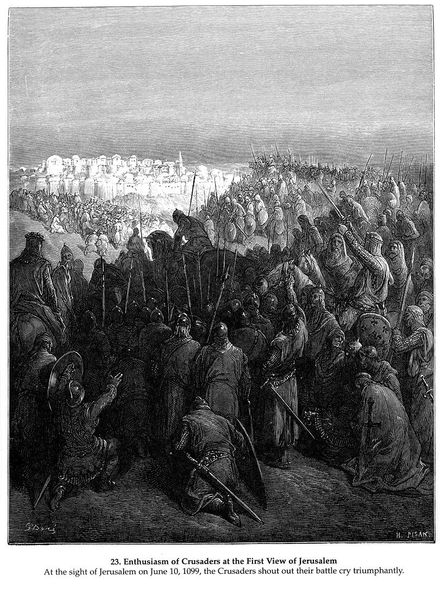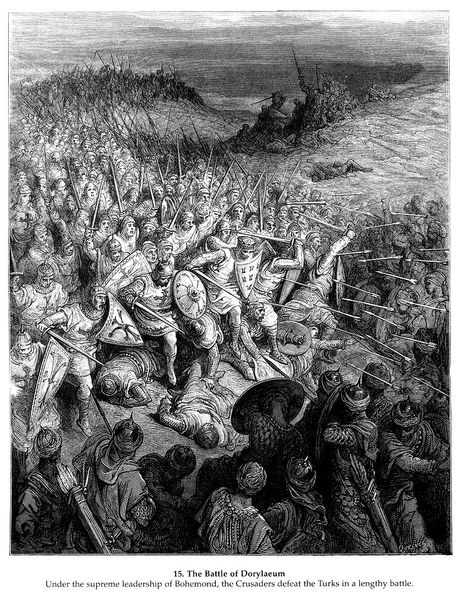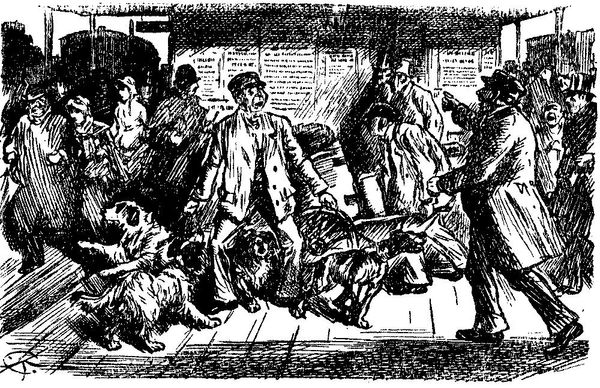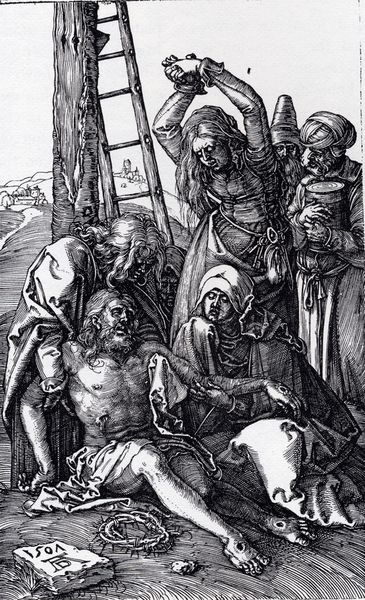
drawing
#
drawing
#
medieval
#
narrative-art
#
charcoal drawing
#
figuration
#
history-painting
Dimensions: 178 mm (height) x 116 mm (width) (bladmaal)
Curator: "Rolf's Death", a drawing created by Lorenz Frølich in 1852, presents a dramatic scene rendered in charcoal. What are your first thoughts on it? Editor: Well, immediately I’m struck by the sheer volume of bodies strewn across the foreground. There's an overwhelming sense of finality—and yet, a strangely theatrical quality to it, like a tableau vivant. All these diagonals of death! Curator: Indeed. The composition employs a strong diagonal axis, drawing the viewer's eye from the fallen figures toward the group standing on the left, with one individual holding aloft what appears to be a burning brand, symbolizing perhaps the extinguishing of life. Note how Frølich contrasts the stillness of the dead with the active mourning or, possibly, benediction given by those standing. Editor: I see it! That upraised arm – it’s a perfect mirror of the figures lying prone below. It’s like, ‘we go up, they go down.’ Heavy stuff, wouldn't you say? The light source is pretty neat as well. Like everything circles the hand that carries the torch. What can you tell me about the context in art history? Is it unusual at the time to see art with this subject matter and stylistic interpretation? Curator: As a history painting created in the mid-19th century, the work finds itself within the trajectory of narrative-art infused with Romantic sensibilities, especially visible in the almost operatic intensity of grief, but filtered here, also, by interests of medieval historicism. It’s quite in keeping, especially given the resurgence of interest in national romanticism around the mid 19th century! Editor: Huh, “Operatic Grief" — I love it! That’s going right into my notes. There’s a tower as well in the backdrop? Any relevance to this at all or merely background noise? Curator: Ah yes! A tower, quite small, looming over all the commotion! This detail invites speculation. It could represent the power of history that presides over human suffering. Or perhaps something very Danish— an emblem, so to say! The interplay between personal tragedy and enduring structures interests me. Editor: Structures... tragedies... It all works together. Looking one last time, the scene leaves me with a melancholic admiration for Frølich's ability to capture a pivotal historical or mythical moment with such dramatic flair and an intimate depiction of raw human emotion. Thanks for unveiling all of this! Curator: And thank you. Considering the formal dynamics, historical context, and emotional depth reveals that such pieces not only document imagined histories, but express profound aspects of our collective human condition.
Comments
No comments
Be the first to comment and join the conversation on the ultimate creative platform.
